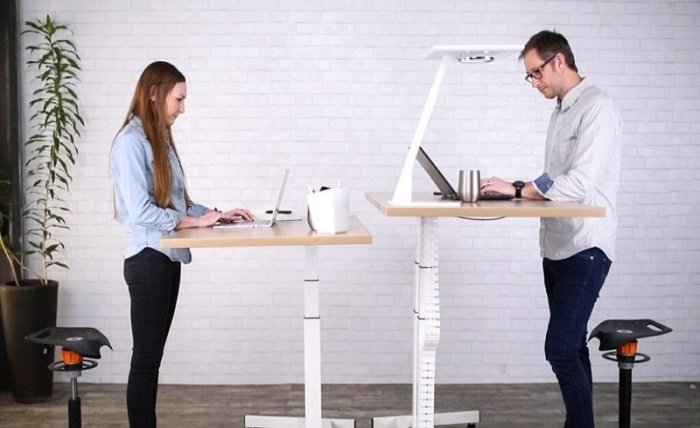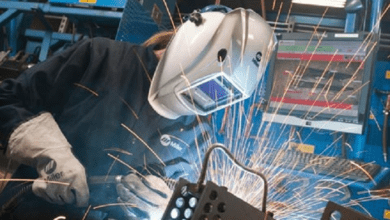Standing Desks vs. Sit-Stand Converters: Choosing the Right Workstation Setup

There has been a growing trend towards more ergonomic and flexible workspaces in recent years. Standing desks and sit-stand converters have emerged as popular options for those seeking to enhance their posture, increase productivity, and promote better overall health while working. This article will explore the differences between a standing office desk and sit-stand converters and help you choose the right workstation setup for your needs.
Standing Desks
As the name suggests, standing desks are designed to be used while standing. They typically have a fixed height suitable for standing and often offer ample surface area to accommodate multiple monitors, a keyboard, and other work essentials. Standing desks are available in various styles, including fixed-height and height-adjustable.
Benefits of Standing Desks
Improved Posture: Standing desks promote a better posture by encouraging proper alignment of the spine, reducing the strain on the neck, back, and shoulders.
Increased Energy and Alertness: Standing while working can help combat the sedentary nature of sitting for long periods, resulting in increased energy levels and improved focus.
Enhanced Blood Circulation: Standing promotes better blood flow throughout the body, reducing the risk of cardiovascular issues associated with prolonged sitting.
Calories Burned: Standing burns more calories than sitting, aiding in weight management and overall fitness.
Sit-Stand Converters
Sit-stand converters, also known as desktop converters or risers, are adjustable units that can be placed on top of an existing desk or workstation. These converters allow users to switch between sitting and standing by altering the height of the workstation surface.
Benefits of Sit-Stand Converters
Cost-Effective Solution: Sit-stand converters offer a more affordable option than investing in a full-standing desk, making them an attractive choice for those on a budget.
Versatility and Adaptability: Converters can be easily added to existing workstations, allowing users to enjoy the benefits of standing without replacing their entire desk setup.
Ease of Adjustment: Most sit-stand converters feature adjustable mechanisms that allow users to switch between sitting and standing positions effortlessly.
Flexibility for Shared Workspaces: Sit-stand converters are ideal for shared workspaces, as they accommodate users of different heights and preferences.
Choosing the Right Option for You:
When deciding between a standing desk and a sit-stand converter, consider the following factors:
Space Availability: Standing desks often require more floor space due to their larger size. If you have limited space, a sit-stand converter may be more suitable, as it can be placed on your desk.
Budget: Standing desks can range in price depending on the quality and features, while sit-stand converters generally offer a more cost-effective solution.
Ergonomic Needs: A standing desk may be better if you require a spacious, dedicated work surface that accommodates multiple monitors or other equipment. However, a sit-stand converter may meet your needs if you are primarily concerned with adjustability and switching between sitting and standing positions.
Ease of Adjustment: Consider how often you want to switch between sitting and standing. A sit-stand converter’s convenience may be more appealing if you prefer the flexibility of easily adjusting the height throughout the day.
Personal Preference: Ultimately, deciding between a standing desk and a sit-stand converter comes down to personal preference and what feels most comfortable and beneficial for your work habits and physical well-being.
Conclusion
Both standing desks and sit-stand converters offer valuable ergonomic benefits and the flexibility to switch between sitting and standing positions while working. Consider your workspace, budget, ergonomic needs, ease of adjustment, and personal preferences when choosing the right office desk. Whether you opt for a full-standing desk or a sit-stand converter, prioritizing ergonomics will contribute to a healthier and more productive work environment.





